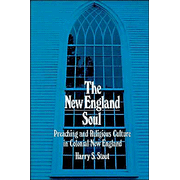
Today's guest review is from Matthew J. Cressler, a doctoral candidate in Religious Studies at Northwestern University. His work combines African American and Catholic histories as they intersect with conceptions of the American nation. Matt is also the recipient of the American Catholic Historical Association's fourteenth annual John Tracy Ellis Dissertation Award. Please join Matt and his colleagues at the round table on Seitz's book at AHA this Saturday, January 7, 9:00 a.m. – 11:00 a.m, Scandal, Resistance, and Practice: A Roundtable on John Seitz’s No Closure, ROUNDTABLE, Chicago Marriott Downtown, Purdue Room.
A Review of John Seitz’s No Closure (2011) and an Invitation to Join the Conversation
Matthew J. Cressler
In May 2004, the Archdiocese of Boston announced that a number of parishes would be closed across the city. The decision to shutdown nearly eighty parishes across the Boston area was a consequence of the immense financial burden of the Catholic sex abuse crisis, as well as longstanding shifts in urban demographics and church attendance. However, by August, it became clear that some groups of Catholics refused to accept the process of parish shutdown. Parishioners across Boston moved into their closed churches and occupied them in “perpetual vigil” – “with their physical and, they repeatedly insisted, 'prayerful' presence they were going to keep the church open despite the decree against it" (10). John Seitz's No Closure: Catholic Practice and Boston's Parish Shutdowns is an ethnographic study of those resisting communities that sets out to answer two fundamental questions: why did Catholics resist the closure of their parishes and what does this resistance tell us about contemporary American Catholicism? In the course of answering these questions, Seitz illustrates the contours of what many resistors experienced as a “spiritual abuse” that followed, and was a continuation of, the sexual abuse of the Church. Resisting Catholics were forced to reexamine the lines and limits of their engagement with the Church, to reconsider the Catholic past and its meanings in their lives, and to take up the responsibilities of everyday church management and theology.
But if No Closure is specifically about this small community of Boston Catholics resisting church shutdowns in the wake of scandal, I’m much more interested in how it also serves as an incisive exploration into American Catholicism at the turn of the 21st century. Though the decision to occupy parishes certainly wasn't the norm amidst parish shutdowns, religious life in the liminal space of occupied churches sheds light on contemporary American Catholic life in ways oftentimes invisible to scholars. To name just two of the broader theoretical interventions of Seitz’s work, No Closure examines the particularity of the Catholic parish in American religious history and the problem of modernity in the narratives of American Catholic history.
By considering what happens when a diocese takes away a parish – effectively an exploration of the unmaking of sacred space – Seitz illuminates the peculiar relationship Catholics have with religious places. The pain felt by parishioners at the loss of their spiritual home indicates the distinctive significance of the parish in American religious history, wherein the parish served as a site for the creation of a particular kind of American religious subject with a particular orientation toward places and the sacred presences that populate them. Calling attention to the habituation of the ways Catholics experience sacred spaces and presences – he talks about the ways Catholics “practice” the parish and presence – Seitz powerfully argues that “inherited and internalized narratives of sacred presence, not simply unreflective attachment, kept these Catholics in their parishes” (160).
Though narratives of American Catholic history often assume that Catholics progressively modernized over the course of the twentieth century, moving more and more toward a lay-led democratic style of congregational Catholicism, Seitz suggests an alternative model of American Catholic modernity. Far from having shed their attachments to specific sacred spaces and the real presence of the supernatural – things presumed passé to the modern religious subject – resisting Catholics struggled over the sacredness of their own parish spaces against an institutional Church that argued churches were merely brick and mortar. Resistors adopted the postconciliar image of themselves as the "living stones" of the Church at the same time that they defended the physicality of the sacred contained in the stone walls of their parish. No Closure thus breaks down the binary map of American Catholicism after Vatican II, demonstrating that many Catholics continued to experience the upheavals of the conciliar era and developed their own interpretations of the Catholic past that do not map neatly onto the postconciliar liberal-conservative map.
Early on in the book Seitz says "this book is not the end of a conversation, but the opening of one" (20). In the spirit of this invitation, I want to invite everyone interested not only to read this compelling book, but also to literally join the conversation this January. Those of you planning on attending the American Historical Association’s winter meeting this January in Chicago, or any of the various related groups like the American Society of Church History or the American Catholic Historical Association, are invited to “Scandal, Resistance, and Practice: A Roundtable on John Seitz’s No Closure.” John McGreevy, Kristy Nabhan-Warren, John Seitz, and my fellow Northwestern doctoral candidate Brian Clites, will join me in a discussion that will use Seitz’s book to open a conversation on themes such as power dynamics between laity and clergy, the construction of Catholic identities, the sacralization of place, and the many ways Catholics have related to their own past at the turn of the twenty-first century.





